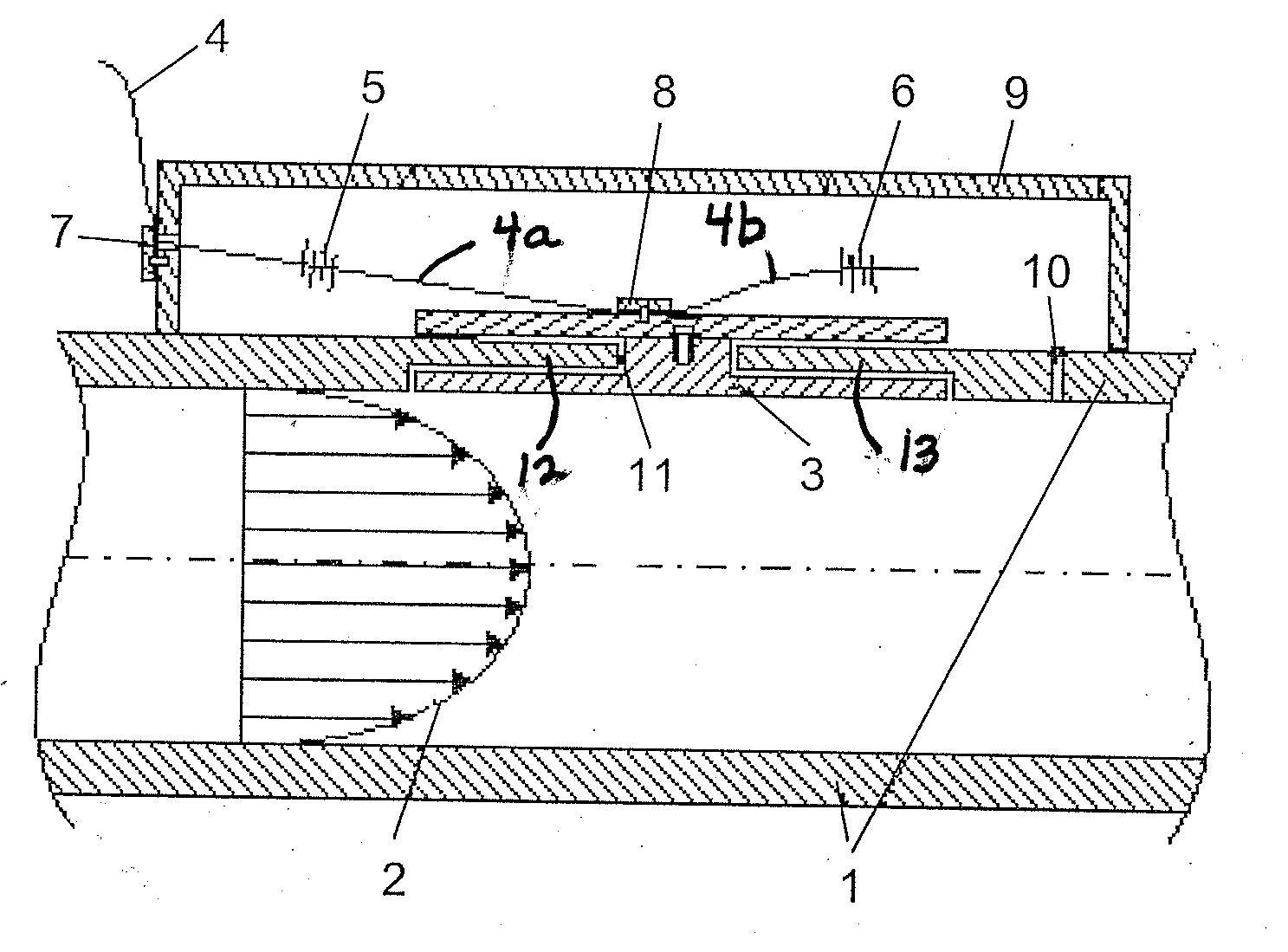Mass flow sensor and method for determining the mass flow in a pipe
a mass flow sensor and mass flow technology, applied in the direction of mass flowmeters, volume/mass flow by dynamic fluid flow effect, instruments, etc., can solve the problems of long flow time loss, large calibration expenditure, and high measurement errors, so as to avoid pressure loss and achieve the effect of considerably more accurate measurement results
- Summary
- Abstract
- Description
- Claims
- Application Information
AI Technical Summary
Benefits of technology
Problems solved by technology
Method used
Image
Examples
Embodiment Construction
[0036]The single Figure shows a pipe 1 section through which a mass flow 2 of a fluid flows, meaning a gas or a liquid. A movable wall element 3, comprising an inside that faces the mass flow 2 and an outside facing away from the mass flow 2, is located in one section of the pipe 1 wall. Attached to the outside of the movable wall element 3, in a chamber 9 that is sealed against the environment, is a glass fiber functioning as expandable connection 4 which contains a first fiber Bragg grating as strain gauge 5 as well as a second fiber Bragg grating functioning as temperature sensor 6. With low pre-stressing, the glass fiber expandable connection 4 is attached with the aid of a first clamping device 7 to one wall of the chamber 9 and with the aid of a second clamping device 8 to the movable wall element 3. The first fiber Bragg grating functioning as the strain gauge 5 is mounted on the section of the glass fiber that functions as expandable connection 4 and is located between the f...
PUM
 Login to View More
Login to View More Abstract
Description
Claims
Application Information
 Login to View More
Login to View More - R&D
- Intellectual Property
- Life Sciences
- Materials
- Tech Scout
- Unparalleled Data Quality
- Higher Quality Content
- 60% Fewer Hallucinations
Browse by: Latest US Patents, China's latest patents, Technical Efficacy Thesaurus, Application Domain, Technology Topic, Popular Technical Reports.
© 2025 PatSnap. All rights reserved.Legal|Privacy policy|Modern Slavery Act Transparency Statement|Sitemap|About US| Contact US: help@patsnap.com


